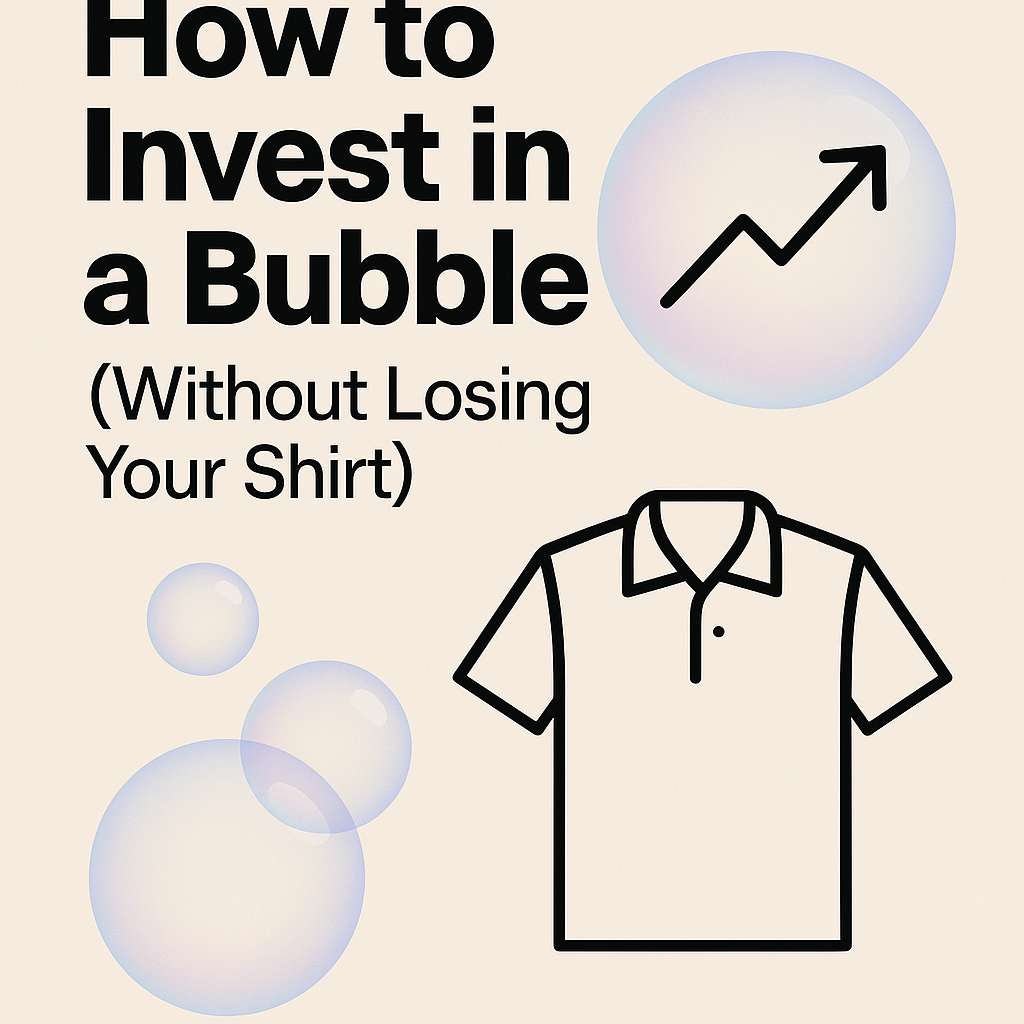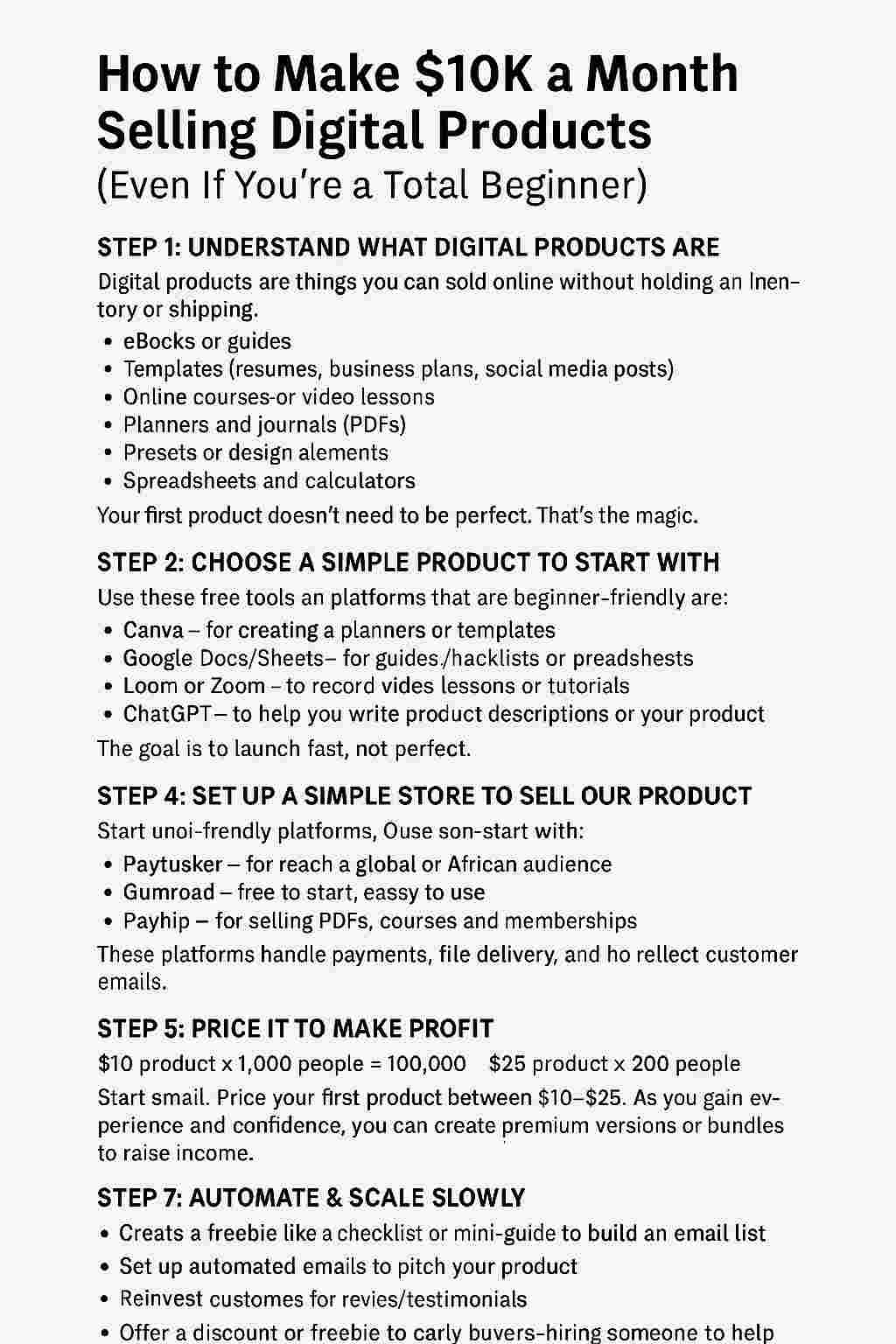
How to Make $10K a Month Selling Digital Products

Tapiwa Simon Gondo
Share this blog

In today’s digital age, turning your knowledge, skills, or creativity into income has never been easier. Whether you’re a designer, writer, educator, or entrepreneur, selling digital products can unlock consistent revenue with low overhead and high scalability. Here’s how you can build a $10K/month digital product business from scratch.
1.
Choose Your Niche Wisely
Your niche determines your audience, product type, and marketing strategy. Successful digital product sellers often focus on one of these high-demand categories:
- Education: eBooks, courses, templates, lesson plans.
- Business & Marketing: Notion dashboards, pitch decks, SEO checklists.
- Design & Creativity: Fonts, icons, Canva templates, stock photos.
- Tech & Development: Code snippets, software plugins, UI kits.
- Personal Development: Journals, planners, habit trackers.
Pick a niche where you have both knowledge and passion, but also ensure there’s market demand.
2.
Create High-Value, Evergreen Products
Focus on products that solve real problems or save people time. Aim for digital products that require one-time creation but can be sold infinitely:
- Ebooks or Guides: Share your expertise in a structured, consumable format.
- Online Courses: Teach skills through video, audio, or slides.
- Templates: Build plug-and-play solutions like business plan templates or resume kits.
- Digital Tools: Spreadsheets, calculators, and planners that automate or simplify tasks.
Test your product idea by creating a minimum viable product (MVP) and getting feedback from a small audience.
3.
Build an Audience Before You Launch
An audience is your biggest asset. Start growing a community on platforms like:
- Instagram or TikTok for visual content
- YouTube for educational videos
- Twitter/X or LinkedIn for thought leadership
- Email newsletters for direct engagement
Share value regularly and use storytelling to build trust. Offer free content or a lead magnet (like a free checklist or mini guide) to grow your email list.
4.
Choose the Right Platform to Sell On
You can use platforms like:
- Paytusker – Ideal for African creators and global sellers alike.
- Gumroad, Payhip, or Sellfy – Easy for beginners with built-in payment and delivery systems.
- Shopify – Great for custom branding and scaling.
- Etsy – Good for templates, planners, and creatives.
Make sure your platform allows for seamless purchases, downloads, and email follow-ups.
5.
Price Strategically
You don’t need thousands of customers to hit $10K/month. Here’s a breakdown:
- 1,000 customers x $10 product = $10,000
- 100 customers x $100 product = $10,000
- 20 customers x $500 product = $10,000
Offer tiered pricing (e.g., basic, pro, premium) to serve different customer segments and increase average order value.
6.
Automate Your Sales Funnel
Use email automation to turn leads into customers:
- Lead Magnet: Offer something free in exchange for their email.
- Nurture Sequence: Send a series of value-packed emails to build trust.
- Sales Pitch: Introduce your product and highlight the transformation it provides.
- Follow-up: Use scarcity (limited bonuses or discounts) to close the sale.
Tools like MailerLite, ConvertKit, or Flodesk can handle this for you.
7.
Scale Through Paid Ads and Partnerships
Once you have a working funnel, reinvest profits into:
- Facebook/Instagram ads to reach a targeted audience
- Affiliate marketing to let others sell your products for a commission
- Influencer collaborations to build credibility and reach
Keep track of metrics like conversion rates and customer acquisition costs to stay profitable.
Final Thoughts
Making $10K/month selling digital products is achievable — but it requires clarity, consistency, and a willingness to keep learning. Start with one high-value product, grow your audience, and build systems that scale. The beauty of digital products is that once you’ve built the machine, it can run and earn while you sleep.
Start now. Build once. Sell forever.
Would you like a version tailored for a specific audience, like African creators or beginners with no audience yet?